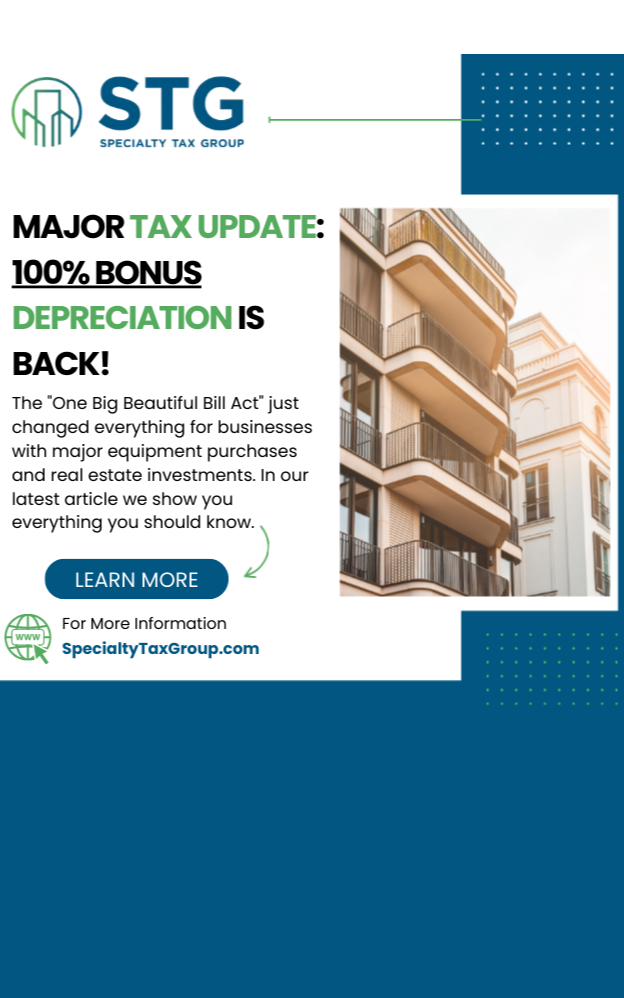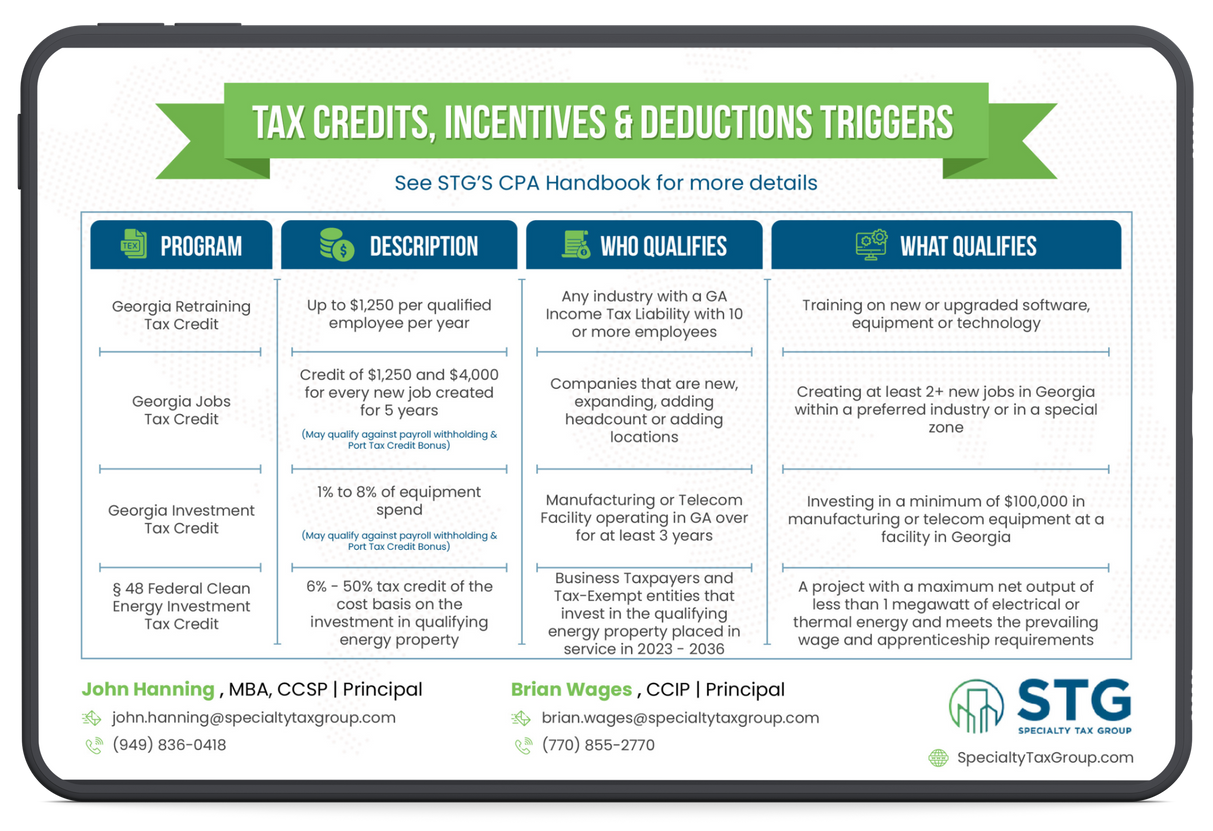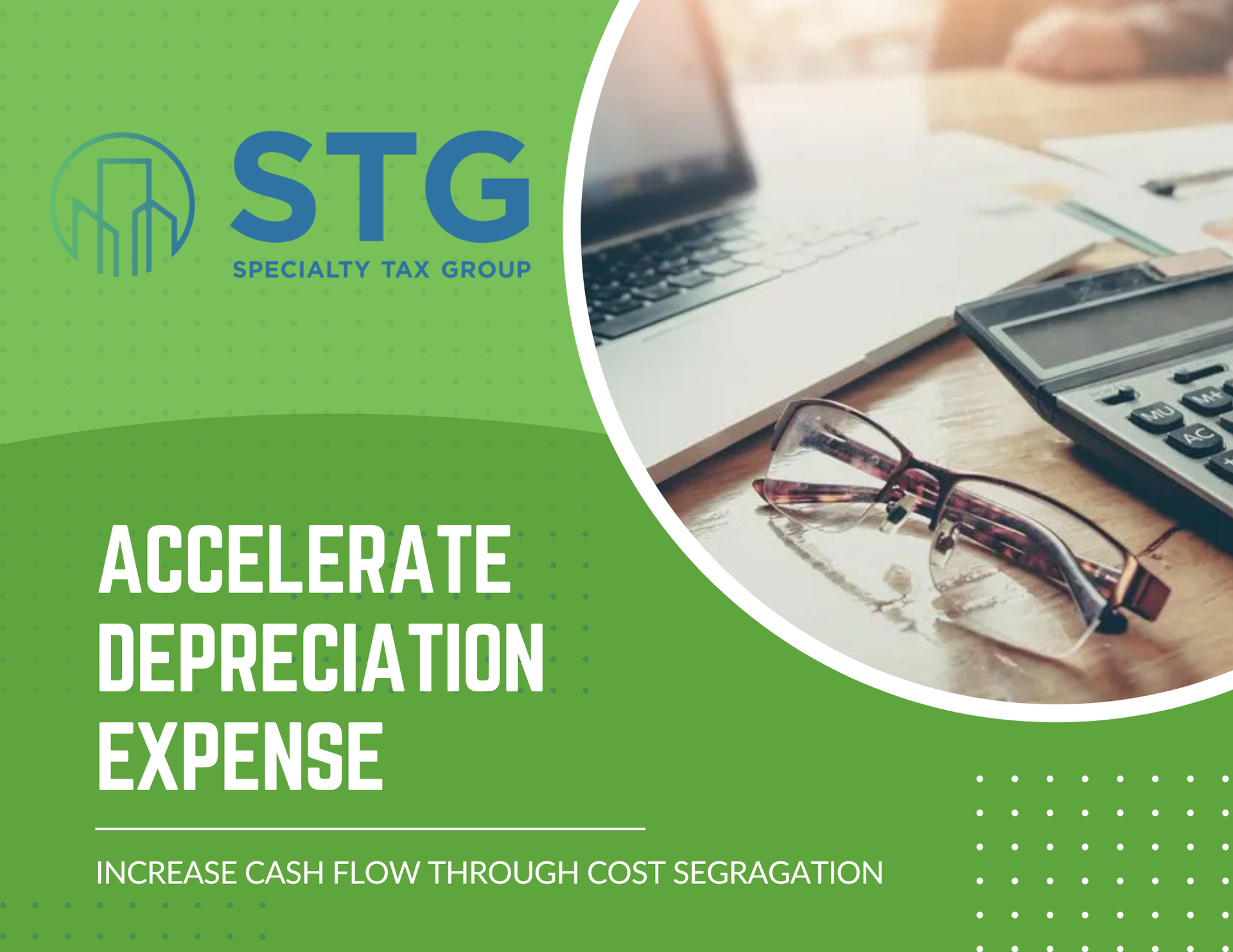This blog post has been researched, edited, and approved by John Hanning and Brian Wages. Join our newsletter below.
Key Takeaways
- The big news: President Trump signed the One Big Beautiful Bill Act (OBBBA) on July 4, 2025, which lets businesses deduct domestic R&D expenses immediately again.
- Small businesses win big: Companies with $31 million or less in average receipts can amend their 2022-2024 returns to get refunds.
- Everyone gets relief: All businesses can deduct remaining unamortized R&D costs from 2022-2024 either all at once in 2025 or spread over 2025 and 2026.
- Time is ticking: Small businesses have only until July 3, 2026 to elect the amendment option.
- Foreign R&D still stuck: Foreign R&D expenses must still be amortized over 15 years.
What Changed with OBBBA Section 174A
For three long years, businesses have struggled with a tax rule that forced them to spread R&D deductions over multiple years instead of taking them immediately. The OBBBA largely reverses the Tax Cuts and Jobs Act (TCJA) changes that required all R&E expenditures to be capitalized starting in 2022.
Here's what's different now:
- Before 2022: Businesses could deduct 100% of R&D costs in the year they spent the money
- 2022-2024: Businesses had to capitalize and amortize R&D expenses over 5 years for domestic research or 15 years for foreign research
- 2025 and beyond: Under new Section 174A, businesses can once again deduct domestic R&E expenditures in the year they are incurred
This change affects everything from software development to manufacturing process improvements.
Small Business vs. Large Business: Who Gets What
The new law treats businesses differently based on their size. Here's how it works:
Small Business Eligibility ($31M Test)
If your business has average annual gross receipts of $31 million or less (using the Section 448(c) test), you can apply the Section 174 repeal retroactively.
How to calculate: Add up your gross receipts for the three years before 2025 and divide by three.
What Small Businesses Can Do
Small businesses get two choices:
- Path 1: Amend returns for 2022-2024 to deduct R&D expenses immediately - but this election must apply to all applicable years, not individual years
- Path 2: Take catch-up deductions by deducting remaining balances either all at once in 2025 or spread evenly over 2025 and 2026
Large Business Options
If your receipts exceed $31 million, you're not eligible for full retroactive relief and cannot amend prior years solely for the Section 174 change.
But you can still: Accelerate remaining unamortized domestic R&D deductions from 2022-2024 over one or two years starting in 2025.
Decision Framework: Should You Amend or Catch Up?
Choosing between amending past returns or taking catch-up deductions isn't simple. An analysis should be performed to determine whether amending a return for a refund is more beneficial than taking the deduction in tax years 2025 or spread over tax years 2025 and 2026.
Comparison Table:
| Factor | Amending Returns | Catch-Up Deductions |
|---|---|---|
| Cash Flow | Immediate refunds from past years | Future tax savings in 2025-2026 |
| Professional Costs | Higher (amendment fees) | Lower (standard filing) |
| Complexity | High (multiple years, 280C elections) | Moderate |
| Risk Level | Risk if no IRS guidance before filing deadlines | Lower compliance risk |
| Deadline | July 4, 2026 | Standard tax filing |
When Amending Makes Sense
- You need cash flow now
- Your business had high tax burdens in 2022-2024
- You lack the tax liability to fully absorb a 2025-2026 catch-up deduction
- You can handle the complexity and costs
When Catch-Up Deductions Are Better
- The immediate deductibility available in tax year 2025, without requiring an amended return, may be the more favorable option
- You prefer simplicity
- Professional fees would eat into your savings
- You have sufficient tax liability in 2025-2026
The Section 280C Puzzle
Here's where things get tricky. If your business claimed a research tax credit during 2022-2024, the operation of IRC Section 280C would reduce those deductions by the amount of the full gross credit.
The good news: Taxpayers also have the opportunity to make a retroactive Section 280C election, as the "Big Beautiful Bill" reverts Section 280C to the pre-Tax Cuts and Jobs Act language.
Important: The Section 280C election is normally not offered retroactively and must be made on an originally filed return.
This coordination between R&D deductions and research & development tax credits requires careful planning.
Implementation Timeline & Critical Deadlines
Time is not on your side. Here are the key dates:
Immediate Actions Needed
- Calculate your gross receipts test - Are you under $31M?
- Identify all R&D expenses from 2022-2024
- Document your research and development activities
- Model cash flow scenarios for both paths
Critical Deadlines
- July 4, 2026: Amendment window closes for small businesses
- 2024 tax filing deadlines: May need extensions while awaiting IRS guidance
- 2025 tax year: New immediate expensing begins
What Qualifies as R&D Expenses
R&E expenditures include costs incurred in the development or improvement of a product, process, formula, invention or software, and Section 174 defines R&E expenditures broadly.
Common Qualifying Activities
- Software development and programming
- Product design and testing
- Process improvements
- Formula development
- Equipment modifications for new uses
The Four-Part Test
The IRS uses specific criteria to determine R&D eligibility:
- Permitted Purpose - Creating new or improved business components
- Elimination of Uncertainty - Facing technological uncertainty
- Technological in Nature - Based on hard sciences
- Process of Experimentation - Systematic testing and evaluation
Don't forget: Software development costs are treated as R&E expenditures under Section 174A while allowing a deduction for such costs.
Industry Impact Analysis
Different industries will see varying benefits from these changes:
Technology & Software
- Immediate expensing of development costs returns
- TCJA amendments required software development costs to be capitalized and amortized, but the new Section 174A retains the statutory treatment while allowing deductions
Manufacturing
- Process improvement costs are eligible immediately
- Equipment modifications for new production methods qualify
Small Startups
If retroactive, amending 2022-2024 returns could yield $6 billion in extra credits and $240 billion in deductions, a $50 billion cash infusion for R&D firms over three years.
Risk Management & Compliance
Current Guidance Gaps
IRS guidance is pending - we expect updates soon on how to properly adjust or amend prior filings.
Documentation Requirements
Keep detailed records of:
- Employee time spent on R&D projects
- Materials and supplies used
- Contractor costs for qualified activities
- Project documentation showing uncertainty elimination
Audit Protection
The IRS has limited audit protection on the treatment of Section 174 costs, including software development costs, and audit protection does not apply to costs incurred under Section 174 if the account method change is made improperly.
Foreign R&D: Still Stuck in the Past
Important reminder: Foreign R&D costs must still be amortized over 15 years, regardless of business size - the fix only applies to domestic R&E expenditures.
This means businesses with both domestic and foreign R&D activities need to:
- Track expenses by location
- Apply different tax treatments
- Keep records to appropriately account for Section 174 software development costs based on location
Cash Flow Projections
Small Business Example
Company Profile: Software startup, $20M average receipts, $2M R&D expenses 2022-2024
| Option | 2025 Cash Flow | Total Benefit |
|---|---|---|
| Amend Returns | ~$420K refund | Immediate |
| Catch-Up 2025 | ~$420K tax savings | 2025 only |
| Split 2025-2026 | ~$210K each year | Spread over 2 years |
| Risk Level | Risk if no IRS guidance before filing deadlines | Lower compliance risk |
| Deadline | July 4, 2026 | Standard tax filing |
Actual benefits depend on tax rates and timing of expenses.
Large Business Scenario
Company Profile: Manufacturing, $75M receipts, $5M unamortized R&D
- Cannot amend past returns
- Can accelerate remaining ~$3M in 2025 or split with 2026
- Saves significant cash compared to continuing 5-year amortization
Strategic Planning Recommendations
For Small Businesses
- Run the numbers - Compare refund amounts vs. future deductions
- Consider cash needs - Do you need money now or later?
- Factor in professional costs - Will amendment fees reduce your benefit?
- Plan for accounting method changes if needed
For All Businesses
- Update your R&D tracking systems for 2025
- Coordinate with bonus depreciation planning
- Review state tax implications
- Plan estimated tax payments for reduced 2025 liability
Looking Forward: 2025 and Beyond
The OBBBA makes this a permanent change to the tax law, rather than a limited, five-year reprieve, which means:
- Immediate expensing is here to stay for domestic R&D
- Planning certainty for long-term R&D investments
- Competitive advantage for U.S. innovation
Integration with Other Tax Benefits
Smart tax planning combines R&D benefits with:
- Energy efficiency incentives for qualified buildings
- State tax credits where available
- Cost segregation for R&D facilities
Common Mistakes to Avoid
- Missing the Deadline: Small businesses only have until July 3, 2026 to make the retroactive election.
- Incomplete Documentation: If you did not amortize R&D costs for 2022-2024, you should consult your tax advisor immediately as the new law does not provide retroactive relief for large businesses.
- Ignoring State Implications: Different states may have different rules for R&D expense treatment.
- Poor Coordination with Credits: There are certain restrictions when taking advantage of both Sections 174 deduction/capitalization and Section 41 [R&D tax credits].
What Industry Experts Are Saying
After three years of watching the Section 174 rules hurt innovative businesses, this feels like common sense finally prevailing. The OBBBA doesn't just fix a broken policy, it signals that America values innovation.
Tax professionals are calling this change "potentially life-changing relief" for innovative businesses that have been struggling with cash flow issues since 2022.
Take Action Now
The OBBBA Section 174A changes represent the biggest shift in R&D taxation in decades. With limited time to make critical decisions and complex rules to navigate, getting professional guidance isn't just helpful, it's essential.
Whether you're considering amending past returns or planning your catch-up strategy, the specialists at Specialty Tax Group can help you analyze your options and maximize your tax savings while ensuring full compliance.
Ready to unlock your R&D tax savings? Contact our team today for a personalized consultation on your OBBBA 174 strategy.
This article provides general information and should not be considered specific tax advice. Consult with qualified tax professionals for guidance on your particular situation.
2024 Tax Guide





